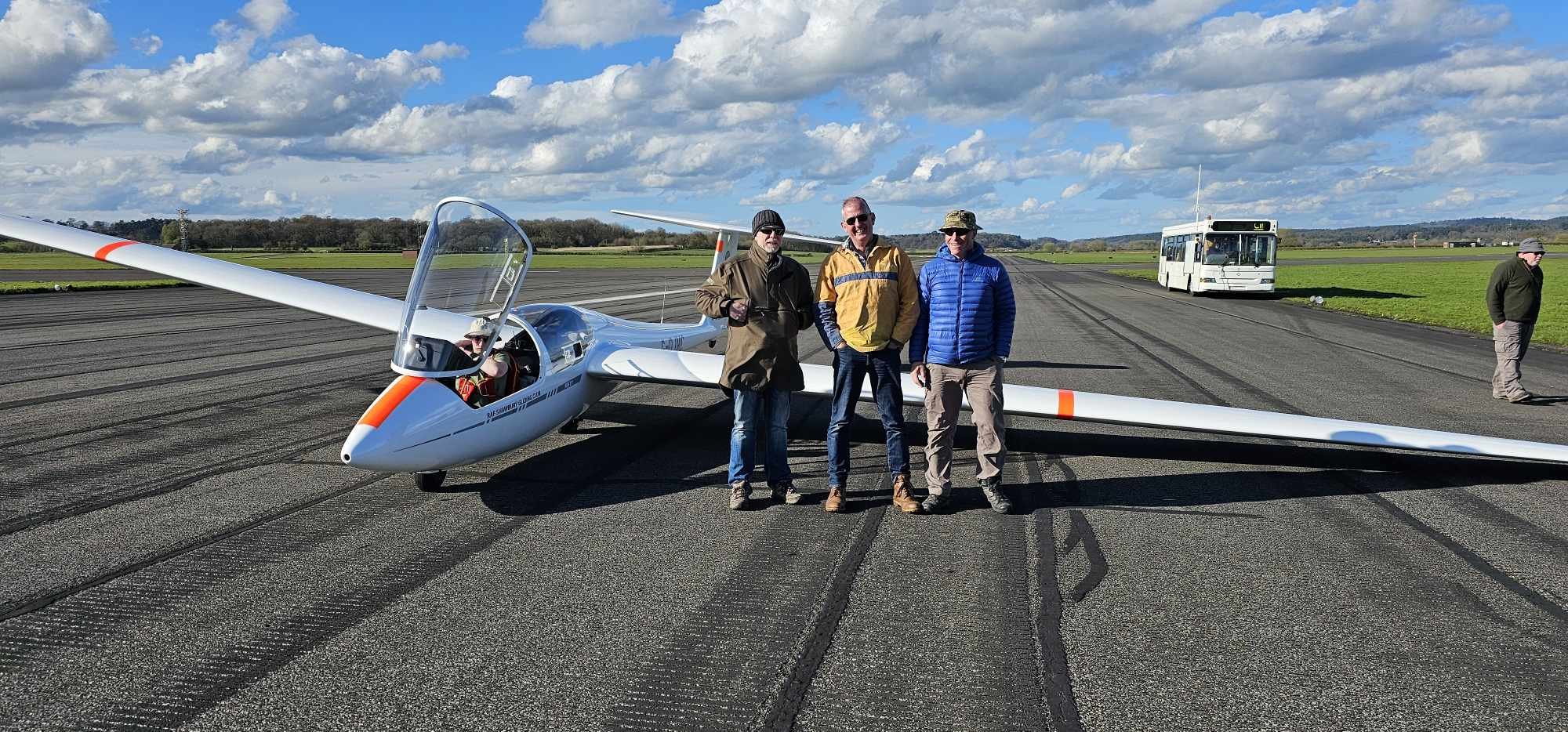AUTONOMOUS AERO-TOW LAUNCH
In a ground-breaking STEM initiative, RAF Shawbury Gliding Club (RSGC) completed the first autonomous aerotow launch today using a Mosraptur Mankΐni2 UAS.
Background
Our MEF gliding scholarship programme for Phase 1 and 2 personnel in training at RAF Shawbury and RAF Cosford has made increasing demands on our instructor cadre, many of whom are also our tug pilots. The club has partially addressed the pressures by aggressively poaching instructors from the Midland Gliding Club (the Myndies) to join us on a permanent basis, but this did not allow us to significantly increase the aerotow launch rate. Incidentally, the Myndies said they only joined to get in some decent flying on a proper airfield.
In April 2023 two club members, Alun and Toby, both of whom are accomplished HALE drone pilots, put forward the concept of an autonomous aero-tow launch system and the club has steadily been refining the idea.
With a base station established in Hangar 4 at RAF Shawbury, trials commenced in October 2023.
Phase 1
Sixty aerotow launches, covering the complete aerotow training syllabus, were successfully completed in the Phase 1 trial. From a risk management perspective our expert in-house, remote pilots exercised full authority over the launch from the safety of the base station. During this stage, we concentrated on operating within the Shawbury MATZ due to the limitations of maintaining Visual Line of Sight (VLOS) and the ongoing refinement of our dedicated high fidelity C2 channel. Using the latest OpenML online machine learning software and an active AI-based meteorological monitoring architecture, the launch system has also been trained to recognise and react to lift, both thermic and wave energy.
The combined accuracy of the aircraft’s operating parameters and meteorological mapping has seen a dramatic increase in aerotow efficiency and reduced the time on tow. At the end of Phase 1 the GoFRit tracking software that provides a dual channel C2 link to both UAS and the towed aircraft, was upgraded to Revision 049b featuring reduced out-of-position parameters and reactional logic to ensure the glider is quickly and safely brought back into the ideal tow position with little pilot input required.
Phase 2
Phase 2 represents a major step forward in the autonomous operation of the aircraft with the expansion into Beyond Visual Line of Sight (BVLOS) and fully autonomous flight operations. After a period of technical and software refinement, the Bayraktar Mankΐni2 UAS was approved for AI-PIC operation without the necessity of a Remote Pilot in Command (RPIC) acting as the flight coordinator.
Today saw the first fully autonomous aero-tow launch conducted with CFI Ian Gallacher in ASK 21 R35 and this marks the formal start of Phase 2 of the trial.
We will shortly be testing the UAS in a more realistic, less controlled, environment and further developing its situational reaction logic. This will facilitate efficient operation and positioning within the circuit when numerous gliders are approaching and landing at the airfield, as well as the somewhat unexpected and at times unexplainable movements of other aircraft, particularly those operating into nearby Sleap Airfield. Nineteen more autonomous aero-tow launches will be completed in Phase 2 and, subject to checks and changes to the RAF Shawbury Flying Order Book (FOB) being promulgated, the first students are expected to be launched using this system from June 2024. Successful completion of Phase 2 will see a roll-out of the launch system to other RAFGSA clubs.
Next Steps
Completion of Phase 2 will not see the end of the continued development of our autonomous towing operations. Behind the scenes, we are working towards the system being certified for all-weather operations thus removing the limitation of not being able to operate the Falke tug in rain. This will increase the overall efficiency and green credentials of the aircraft with the long-term goal of achieving continuous operation through the flying day without the need to take the aircraft off-line or refuel it. In December 2024 it is planned to take the complete launch system to North Carolina for trials and evaluation by an American club. Looking longer term, the power of the Mosraptur Mankΐni2 UAS lends itself to dual, tandem aero-tow launches, the parameters for which are at an early stage of testing in the club simulator.
Outcomes
This fully autonomous aerotow launch system will:
avoid a tug shut-down for crew change,
speed up the launch rate,
achieve consistent aero-tow launches
optimise the speed of the on-tow glider,
automatically route clear of noise sensitive areas,
select the optimum point for glider release,
avoid being towed downwind
avoid being released in cloud and rain,
release tug pilot hours for training.
Watch our club news for further updates on this fantastic initiative.






